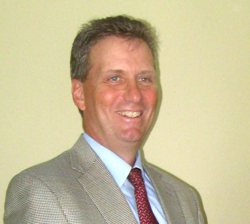 If there’s any bounceback in companies’ IT spending in the next 18-24 months, Delaware County-based Fastech Integrated Solutions will be ready to catch the ricochet. The company, which late last year made two acquisitions that pushed its revenue projections to $30 million for 2010, will do that with expanded management, systems and processes to grow organically in IP telephony and WAN optimization through a managed services model.
If there’s any bounceback in companies’ IT spending in the next 18-24 months, Delaware County-based Fastech Integrated Solutions will be ready to catch the ricochet. The company, which late last year made two acquisitions that pushed its revenue projections to $30 million for 2010, will do that with expanded management, systems and processes to grow organically in IP telephony and WAN optimization through a managed services model.
Fastech’s disaster recovery and hosting division, Ixilix, was the backbone of its IT solutions offerings, which are now centered on helping small- to mid-sized companies integrate their technologies. It acquired the assets of Aserdiv, Inc., a Northeast Corridor leader in Riverbed WAN optimization, wireless networking solutions and data center management tools based in suburban Philly. Fastech also scooped up Transcend Communications of Minneapolis, the nation’s largest regional reseller of Shoretel VoIP telephony and unified communications equipment that operates in 35 states and a provider of Avaya small business solutions.
The company plans on seeking out more acquisitions in the next year, and Fastech CEO Rick Hirsh, who has been with the company through numerous iterations since 1995, is perfectly suited for a company and industry that inherently thrives on change and movement.
Keystone Edge: Change has become second-nature for Fastech. Why?
Rick Hirsh: We didn’t wake up 20 years ago and say it would be good to change course a bunch of times, but it really pays for us to be nimble and responsive to what the market is looking for. We’re not IBM, GE or Microsoft. We hope to respond to what the market is looking for. In this iteration, we believe what the market is looking for is a concept we’re trying to build out. It is quicker to grow through acquisitions than one customer at a time because we’ve got a lot of strength in management. It makes it more complex maybe, but definitely makes it more interesting.
KE: This wasn’t a package deal, so how did you pull it off so smoothly?
RH: We did both on Nov. 24, but by the time we were into mid-October, the organizations were already talking to one another. We had taken the confidentiality veil off the deal internally. Executives from different groups were already in contact, so the day we closed, we had executives from all three groups in our office in Springfield for a kickoff meeting. We used our time very efficiently. We didn’t want to disrupt December. On one hand it was a complicated deal; on the other hand, it’s only 60 employees and we have people smart enough to make it work.
KE: How do the acquisitions impact your customer base?
RH: With Ixillix, we targeted small- to mid-sized companies, with a focus probably on smaller companies, under $50 million in revenue. With the three groups being combined and the customer base we’re acquiring, that target revenue figure has definitely gone up. We’re more on the big market side. That was one of the attractions. When you’re a really small company, there are a relatively limited number of things you can offer to a big company. As you become bigger, you get more expertise, more engineers, more relationships with new technology manufacturers. You’ve got a better story to tell that bigger company.
KE: What technologies can you forecast being integral parts of doing business in five years?
RH: It’s not up to us to put a bet on the technology of 2014. It’s very hard to look out even three years. We’re not capitalized to make those bets. We don’t really want to be in that business. What we try to understand is where the technology is over the next 24 months that we can add value to and bring that value to our customers. Business needs, such as the need for interpersonal communication, remain relatively constant while the enabling technologies change over time. An example would be the switch from PBX to VoIP phone systems that’s just getting underway now.
We want to focus on what the business problems will be and how to bring them the best technology that’s out there. If we see something fading as a technology, we’ll start devaluing it and make sure we’re ready to get onboard the next one.
KE: What kind of business problems will you now be able to solve?
RH: What’s most exciting is not any one of these technologies, but how they get combined. When I was speaking with our Transcend group in Minneapolis, they’re 95 percent focused on VoIP. Their customers need WAN optimization because of their VoIP. Few venders out there were looking at the intersection of that problem. Now we can go to customers and say we can offer VoIP and expertise and technology that would provide better quality service. We’re in a position to go out on a major account call and bring in engineers from both disciplines to show their CIO how we can manage the problem. We’re making a really compelling solution for customers who before had to go out and make three or four calls to make it happen.
Joe Petrucci is managing editor of Keystone Edge. Send feedback here.
To receive Keystone Edge free every week, click here.



